The Story of the Malakand Field Force by Winston S. Churchill (guided reading books txt) 📕
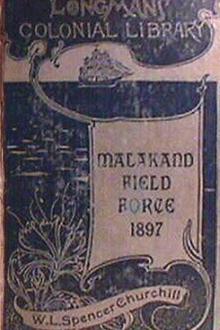
- Author: Winston S. Churchill
- Performer: -
Book online «The Story of the Malakand Field Force by Winston S. Churchill (guided reading books txt) 📕». Author Winston S. Churchill
Then for the first time, I perceived that the repulse was general along the whole front. What I have described was only an incident. But the reader may learn from the account the explanation of many of our losses in the frontier war. The troops, brave and well-armed, but encumbered with wounded, exhausted by climbing and overpowered by superior force, had been ordered to retire. This is an operation too difficult for a weak force to accomplish. Unless supports are at hand, they must be punished severely, and the small covering parties, who remain to check the enemy, will very often be cut to pieces, or shot down. Afterwards in the Mamund Valley whole battalions were employed to do what these two Sikh companies had attempted. But Sikhs need no one to bear witness to their courage.
During the retirement down the spur, I was unable to observe the general aspect of the action, and now in describing it, I have dealt only with the misadventures of one insignificant unit. It is due to the personal perspective. While the two advanced companies were being driven down the hill, a general attack was made along the whole left front of the brigade, by at least 2000 tribesmen, most of whom were armed with rifles. To resist this attack there were the cavalry, the two supporting companies of the 35th Sikhs and five of the Guides Infantry, who were arriving. All became engaged. Displaying their standards, the enemy advanced with great courage in the face of a heavy fire. Many were killed and wounded, but they continued to advance, in a long skirmish line, on the troops. One company of the 35th became seriously involved.
Seeing this, Captain Cole moved his squadron forward, and though the ground was broken, charged. The enemy took refuge in the nullah, tumbling into it standards and all, and opened a sharp fire on the cavalry at close range, hitting several horses and men. The squadron fell back. But the moral effect of their advance had been tremendous.
The whole attack came to a standstill. The infantry fire continued. Then the tribesmen began to retire, and they were finally repulsed at about twelve o’clock.
An opportunity was now presented of breaking off the action. The brigade had started from camp divided, and in expectation that no serious resistance would be offered. It had advanced incautiously. The leading troops had been roughly handled. The enemy had delivered a vigorous counter attack. That attack had been repulsed with slaughter, and the brigade was concentrated. Considering the fatigues to which the infantry had been exposed, it would perhaps have been more prudent to return to camp and begin again next morning. But Brigadier-General Jeffries was determined to complete the destruction of Shahi-Tangi, and to recover the body of Lieutenant Hughes, which remained in the hands of the enemy.
It was a bold course. But it was approved by every officer in the force.
A second attack was ordered. The Guides were to hold the enemy in check on the left. The Buffs, supported by the 35th Sikhs, were to take the village. Orders were signalled back to camp for all the available troops to reinforce the column in the field, and six fresh companies consequently started. At one o’clock the advance recommenced, the guns came into action on a ridge on the right of the brigade, and shelled the village continuously.
Again the enemy fell back “sniping,” and very few of them were to be seen. But to climb the hill alone took two hours. The village was occupied at three o’clock, and completely destroyed by the Buffs. At 3.30 orders reached them to return to camp, and the second withdrawal began. Again the enemy pressed with vigour, but this time there were ten companies on the spur instead of two, and the Buffs, who became rearguard, held everything at a distance with their Lee-Metford rifles. At a quarter to five the troops were clear of the hills and we looked about us.
While this second attack was being carried out, the afternoon had slipped away. At about two o’clock Major Campbell and Captain Cole, both officers of great experience on the frontier, had realised the fact, that the debate with the tribesmen could not be carried to a conclusion that day. At their suggestion a message was heliographed up to the General’s staff officer on the spur near the guns, as follows: “It is now 2.30. Remember we shall have to fight our way home.” But the brigadier had already foreseen this possibility, and had, as described, issued orders for the return march. These orders did not reach Captain Ryder’s company on the extreme right until they had become hard pressed by the increasing attack of the enemy. Their wounded delayed their retirement. They had pushed far up the mountain side, apparently with the idea they were to crown the heights, and we how saw them two miles away on the sky line hotly engaged.
While I was taking advantage of a temporary halt, to feed and water my pony, Lieutenant MacNaghten of the 16th Lancers pointed them out to me, and we watched them through our glasses. It was a strange sight. Little figures running about confusedly, tiny puffs of smoke, a miniature officer silhouetted against the sky waving his sword. It seemed impossible to believe that they were fighting for their lives, or indeed in any danger. It all looked so small and unreal. They were, however, hard pressed, and had signalled that they were running out of cartridges. It was then five o’clock, and the approach of darkness was accelerated by the heavy thunderclouds which were gathering over the northern mountains.
At about 3.30 the brigadier had ordered the Guides to proceed to Ryder’s assistance and endeavour to extricate his company. He directed Major Campbell to use his own discretion. It was a difficult problem, but the Guides and their leader were equal to it. They had begun the day on the extreme left. They had hurried to the centre. Now they were ordered to the extreme right. They had already marched sixteen miles, but they were still fresh. We watched them defiling across the front, with admiration.
Meanwhile, the retirement of the brigade was delayed. It was necessary that all units should support each other, and the troops had to wait till the Guides had succeeded in extricating Ryder. The enemy now came on in great strength from the north-western end of the valley, which had been swarming with them all day, so that for the first time the action presented a fine spectacle.
Across the broad plain the whole of the brigade was in echelon. On the extreme right Ryder’s company and the Guides Infantry were both severely engaged. Half a mile away to the left rear the battery, the sappers and two companies of the 35th Sikhs were slowly retiring. Still farther to the left were the remainder of the 35th, and, at an interval of half a mile, the Buffs. The cavalry protected the extreme left flank. This long line of troops, who were visible to each other but divided by the deep broad nullahs which intersected the whole plain, fell back slowly, halting frequently to keep touch. Seven hundred yards away were the enemy, coming on in a great half-moon nearly three miles long and firing continually. Their fire was effective, and among other casualties at this time Lieutenant Crawford, R.A., was killed. Their figures showed in rows of little white dots. The darkness fell swiftly. The smoke puffs became fire flashes. Great black clouds overspread the valley and thunder began to roll. The daylight died away. The picture became obscured, and presently it was pitch dark. All communication, all mutual support, all general control now ceased. Each body of troops closed up and made the best of their way to the camp, which was about seven miles off. A severe thunderstorm broke overhead. The vivid lightning displayed the marching columns and enabled the enemy to aim. Individual tribesmen ran up, shouting insults, to within fifty yards of the Buffs and discharged their rifles. They were answered with such taunts as the limited Pushtu of the British soldier allows and careful volleys. The troops displayed the greatest steadiness. The men were determined, the officers cheery, the shooting accurate. At half-past eight the enemy ceased to worry us. We thought we had driven them off, but they had found a better quarry.
The last two miles to camp were painful. After the cessation of the firing the fatigue of the soldiers asserted itself. The Buffs had been marching and fighting continuously for thirteen hours. They had had no food, except their early morning biscuit, since the preceding night. The older and more seasoned amongst them laughed at their troubles, declaring they would have breakfast, dinner and tea together when they got home. The younger ones collapsed in all directions.
The officers carried their rifles. Such ponies and mules as were available were laden with exhausted soldiers. Nor was this all. Other troops had passed before us, and more than a dozen Sepoys of different regiments were lying senseless by the roadside. All these were eventually carried in by the rearguard, and the Buffs reached camp at nine o’clock.
Meanwhile, the Guides had performed a brilliant feat of arms, and had rescued the remnants of the isolated company from the clutches of the enemy. After a hurried march they arrived at the foot of the hill down which Ryder’s men were retiring. The Sikhs, utterly exhausted by the exertions of the day, were in disorder, and in many cases unable from extreme fatigue even to use their weapons. The tribesmen hung in a crowd on the flanks and rear of the struggling company, firing incessantly and even dashing in and cutting down individual soldiers. Both officers were wounded. Lieutenant Gunning staggered down the hill unaided, struck in three places by bullets and with two deep sword cuts besides. Weary, outnumbered, surrounded on three sides, without unwounded officers or cartridges, the end was only a matter of moments. All must have been cut to pieces. But help was now at hand.
The Guides formed line, fixed bayonets and advanced at the double towards the hill. At a short distance from its foot they halted and opened a terrible and crushing fire upon the exulting enemy. The loud detonations of their company volleys were heard and the smoke seen all over the field, and on the left we wondered what was happening. The tribesmen, sharply checked, wavered. The company continued its retreat.
Many brave deeds were done as the night closed in. Havildar Ali Gul, of the Afridi Company of the Guides, seized a canvas cartridge carrier, a sort of loose jacket with large pockets, filled it with ammunition from his men’s pouches, and rushing across the fire-swept space, which separated the regiment from the Sikhs, distributed the precious packets to the struggling men. Returning he carried a wounded native officer on his back. Seeing this several Afridis in the Guides ran forward, shouting and cheering, to the rescue, and other wounded Sikhs were saved by their gallantry from a fearful fate. At last Ryder’s company reached the bottom of the hill and the survivors reformed under cover of the Guides.
These, thrown on their own resources, separated from the rest of the brigade by darkness and distance and assailed on three sides by the enemy, calmly proceeded to fight their way back to camp. Though encumbered with many wounded and amid broken ground, they repulsed every attack, and bore down all the efforts which the tribesmen made to intercept their line of retreat. They reached camp at 9.30 in safety, and not without honour. The skill and experience of their officers, the endurance and spirit of the

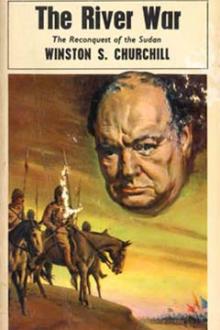
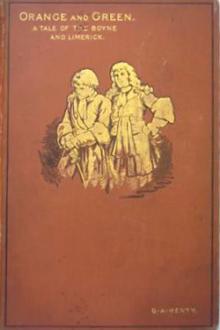
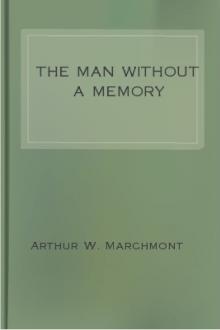
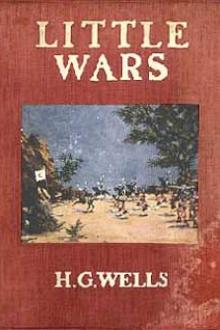
Comments (0)